When we look at the human body, we typically identify three distinct planes of motion: sagittal, frontal and transverse. Many standard, traditional exercises and workout programs focus on only one plane of motion. The second phase of the ACE Integrated Fitness Training® Model (ACE IFT®) focuses on movement and teaching clients how to successfully move through all three planes of motion.
The idea of training multiplanar movement patterns has long been advocated by Gary Gray, a physical therapist based out of Adrian, Mich. Gray founded the Gray Institute to teach physical therapists and health and fitness professionals how the human body is designed to move, as well as how to create movement-based exercise programs. One strategy the Gray Institute promotes is creating a matrix of movement by taking an exercise and “tweaking” it to initiate movement in all three planes.
When it comes to anatomy and physiology, one important concept that we often overlook is the fact that the human body rarely performs the exact same movement the exact same way. In fact, the only place where human movement is consistently repetitive is in the gym. In most other settings, we frequently change positions to dissipate the physical stresses applied to our muscles. If individuals performed the exact same movements all of the time, basketball players would never miss free throws and baseball pitchers would always throw strikes. The Gray Institute’s systematic approach to exercise-program design teaches health and fitness professionals effective strategies for ensuring that clients are able to perform successful movement patterns in all three planes.
To create a movement-training matrix, take one exercise and make a column for each plane of movement. Next, identify how to adjust the movement in that plane. Each plane of motion offers two options for movement. Following are four specific examples for creating matrices for common exercises. Once you become more familiar with how to use a matrix to program and coach multiplanar movement patterns, you can challenge clients by having them move in multiple planes at the same time. For example, performing a right lateral lunge while reaching in front of the body at ankle height.
Creating a Plane-by-plane Movement Matrix
Plane: Sagittal
Directions:
Anterior or posterior
Plane: Frontal
Directions:
Adduct or abduct
Right or left lateral
Plane: Transverse
Directions:
Right rotation or left rotation
At shoulders and hips: internal rotation or external rotation
Teaching clients how to perform exercises in the multiple directions allowed by each plane improves overall movement efficiency.
Exercise: Squat
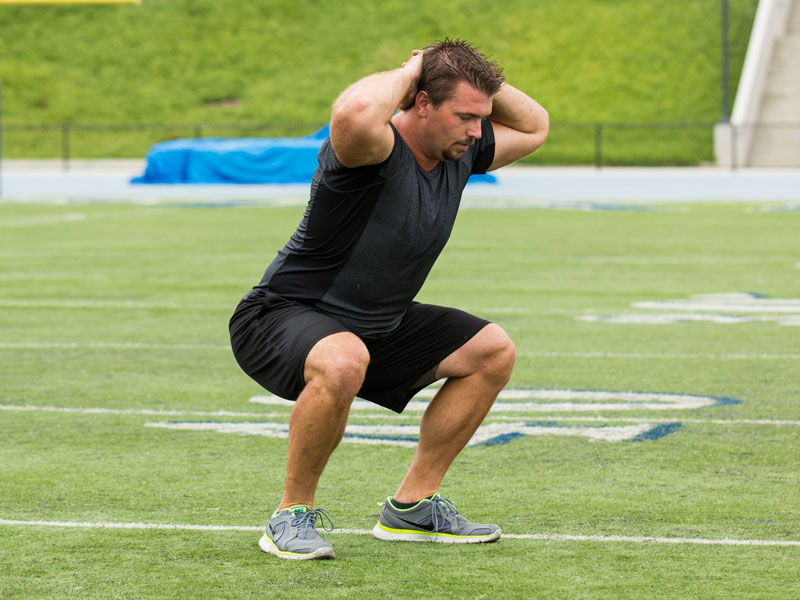
Traditionally performed with feet parallel and approximately hip-width apart.
Sagittal plane
Change the feet in one of two directions: anterior or posterior, which results in moving one foot slightly forward of the other:
- Right foot forward
- Left foot forward
Frontal plane
Move the feet in one of two directions: abduct away from the body or adduct toward the midline, which results in placing the feet either wide or narrow:
- Wide stance
- Narrow stance
Transverse plane
Create internal or external rotation at the feet or hips* to change the forces on the involved tissues:
- Feet internally rotated
- Feet externally rotated
*Creating internal rotation at the feet or hips could increase stresses on the knees and is not recommend for individuals with pre-existing knee injuries.
Exercise: Push-up
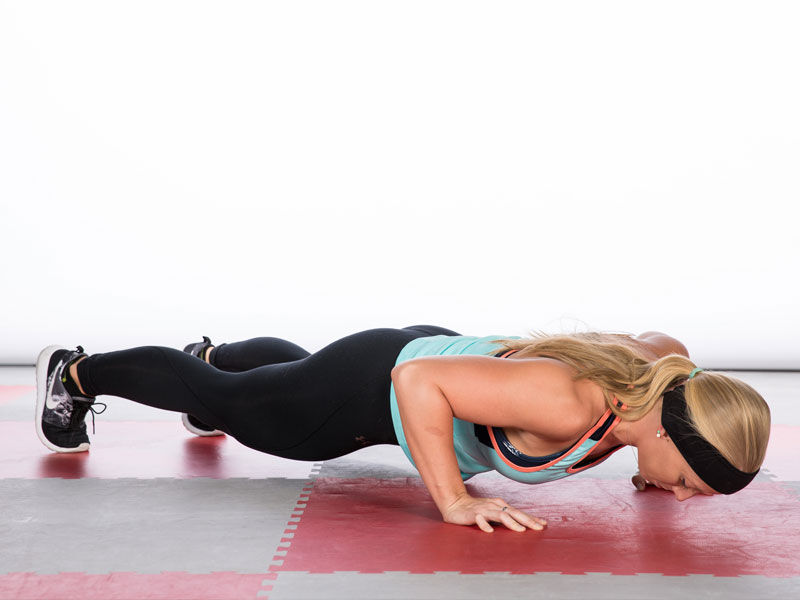
Traditionally performed with hands parallel and a little wider shoulder-width apart
Sagittal plane
Change the hands in one of two directions: anterior or posterior, which results in moving one hand slightly forward of the other:
- Right hand forward
- Left hand forward
Frontal plane
Move the hands in one of two directions: abduct away from the body or adducted toward the midline, which results in placing the hands either wide or narrow:
- Wide grip
- Narrow grip
Transverse plane
Rotate the shoulders in one of two directions: internal or external rotation, which results in placing the hands either internally rotated or externally rotated:
- Hands internally rotated
- Hands externally rotated
Exercise: Shoulder press
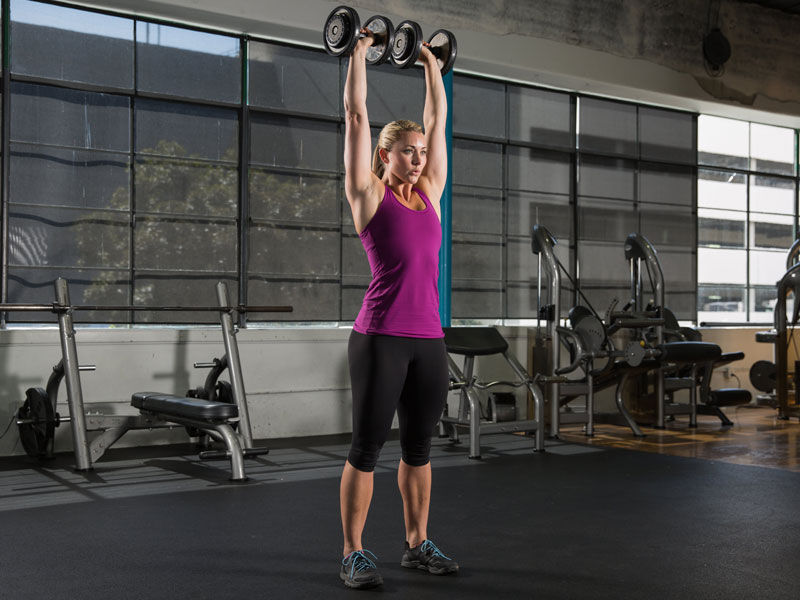
Traditionally performed with arms wide and pressing the hands straight overhead
Sagittal plane
Two options to move hands and arms: anterior to the front of the body or posterior behind the body. Start with palms facing midline of body and elbows facing forward:
- Extend hand/arm overhead and in front of the body
- Extend the hand/arm overhead and behind the body
Frontal plane
Two options to move hands and arms: laterally to the same side of the moving arm or opposite lateral, working to the opposite side of the moving arm. Start with palms facing midline of body and elbows facing forward:
- Extend arm overhead and to the side (i.e., right arm reaching out to the right side of the body)
- Extend arm overhead and to the opposite side of the body (i.e., extend the right arm overhead toward the left side of body)
Transverse plane
Two options to move hands and arms: rotate with the hand and arm to reach across the body or rotate to the same side as the moving arm. Start with palms facing midline of body and elbows facing forward:
- Extend arm overhead and behind the body on the same side (i.e., turn to the right while extending the right arm overhead)
- Extend arm overhead and across the body, allowing the trunk to rotate (i.e., the right arm reaching across the body to rotate the trunk to the left)
Exercise: Lunge
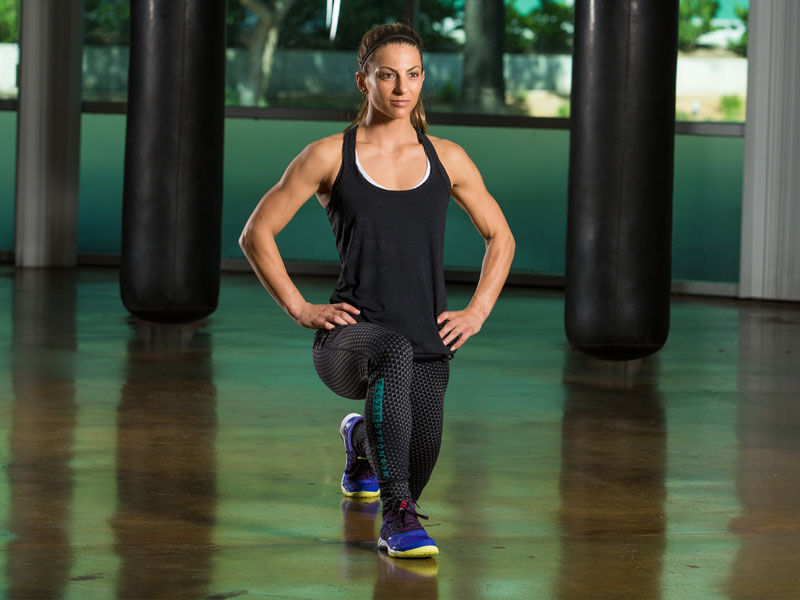
Traditionally performed in the sagittal plane by remaining in place for a static lunge or stepping forward into a lunge
Sagittal plane
Two options to step with the lunge: anterior to the front of the body or posterior, behind the body. Start with feet hip-width apart:
- Anterior lunge—stepping forward with right leg
- Posterior lunge—stepping backward with the right leg
Frontal plane
Two options to step with the lunge: to the same side as the moving leg or across the body to the opposite side of the moving leg. Start with feet hip-width apart:
- Right foot step to the right side of the body for a right lateral lunge
- Right foot step to the left side of the body (stepping behind the left hip) for an opposite lateral lunge
Transverse plane
Two options to step with the lunge: rotating to the same side as the moving leg or rotating to step across the body with the moving leg. Start with feet hip-width apart:
- With the right foot, rotate the body to the right and step with the right foot into a lunge (the left foot stays at 12 o’clock, the right foot steps to 4 o’clock)
- With the right foot, rotate the body to the left and step across the front of your body into a lunge (the left foot stays at 12 o’clock, the right foot steps towards 11 o’clock)




 by
by 


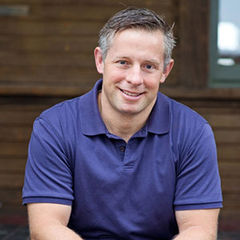


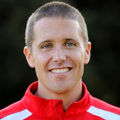 by
by